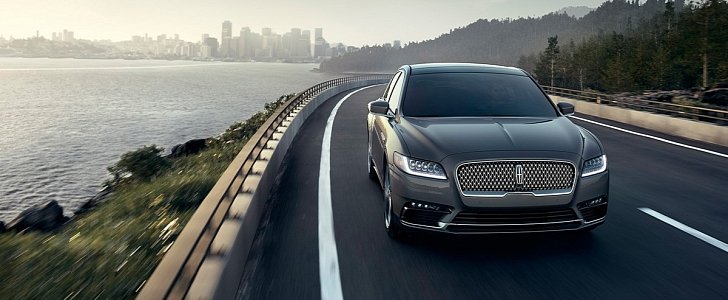Introduced for the 2017 model year, the tenth-generation Continental received a lot of criticism when it was presented. On the one hand, the automotive media was expecting Lincoln to go rear-wheel-drive. And on the other hand, Bentley designer Luc Donckerwolke dissed one of Lincoln’s designers on Facebook as follows: “I would have called it a Flying Spur concept and kept the four round lights.” Ouch!
The truth of the matter is, the Ford Motor Company’s Lincoln division could’ve done a lot more to make the Continental as good as possible. It’s because of this half-hearted approach that sales aren’t doing great. There’s even a possibility the luxo-sedan could be discontinued, as it moved 18,846 units in 18 months of sales.
On the flip side, the discontinuation can wait because there’s a new rendition in the offing, bragging with rear-hinged doors. From Automotive News, citing dealers from the 2018 NADA show: “Lincoln plans to add suicide doors to a future version of the Continental sedan in a move that harks back to the nameplate's iconic past.”
The Lincoln dealers, who didn’t want to be identified for the most obvious of reasons, claim that the automaker had shown them a photo of the overhauled Continental with rear-hinged doors. Dealers also “saw the upcoming Aviator crossover, which will debut next week at the New York auto show,” and that’s the gist of it all.
Lincoln re-applied for the Aviator trademark in 2015. Compared to the short-lived SUV based on the third generation of the Ford Explorer, the newcomer will transition from body-on-frame to unibody construction thanks to the CD6 platform. The modular architecture will be shared with the next-generation Explorer.
The Explorer, Aviator, and Continental will be offered with a selection of four- and six-cylinder engines, with the 3.0-liter EcoBoost V6 expected to top the range with 400-plus horsepower. Regardless of application, the twin-turbo six-pot plant will be matched to the 10-speed automatic transmission co-developed with General Motors.
On the flip side, the discontinuation can wait because there’s a new rendition in the offing, bragging with rear-hinged doors. From Automotive News, citing dealers from the 2018 NADA show: “Lincoln plans to add suicide doors to a future version of the Continental sedan in a move that harks back to the nameplate's iconic past.”
The Lincoln dealers, who didn’t want to be identified for the most obvious of reasons, claim that the automaker had shown them a photo of the overhauled Continental with rear-hinged doors. Dealers also “saw the upcoming Aviator crossover, which will debut next week at the New York auto show,” and that’s the gist of it all.
Lincoln re-applied for the Aviator trademark in 2015. Compared to the short-lived SUV based on the third generation of the Ford Explorer, the newcomer will transition from body-on-frame to unibody construction thanks to the CD6 platform. The modular architecture will be shared with the next-generation Explorer.
The Explorer, Aviator, and Continental will be offered with a selection of four- and six-cylinder engines, with the 3.0-liter EcoBoost V6 expected to top the range with 400-plus horsepower. Regardless of application, the twin-turbo six-pot plant will be matched to the 10-speed automatic transmission co-developed with General Motors.

























